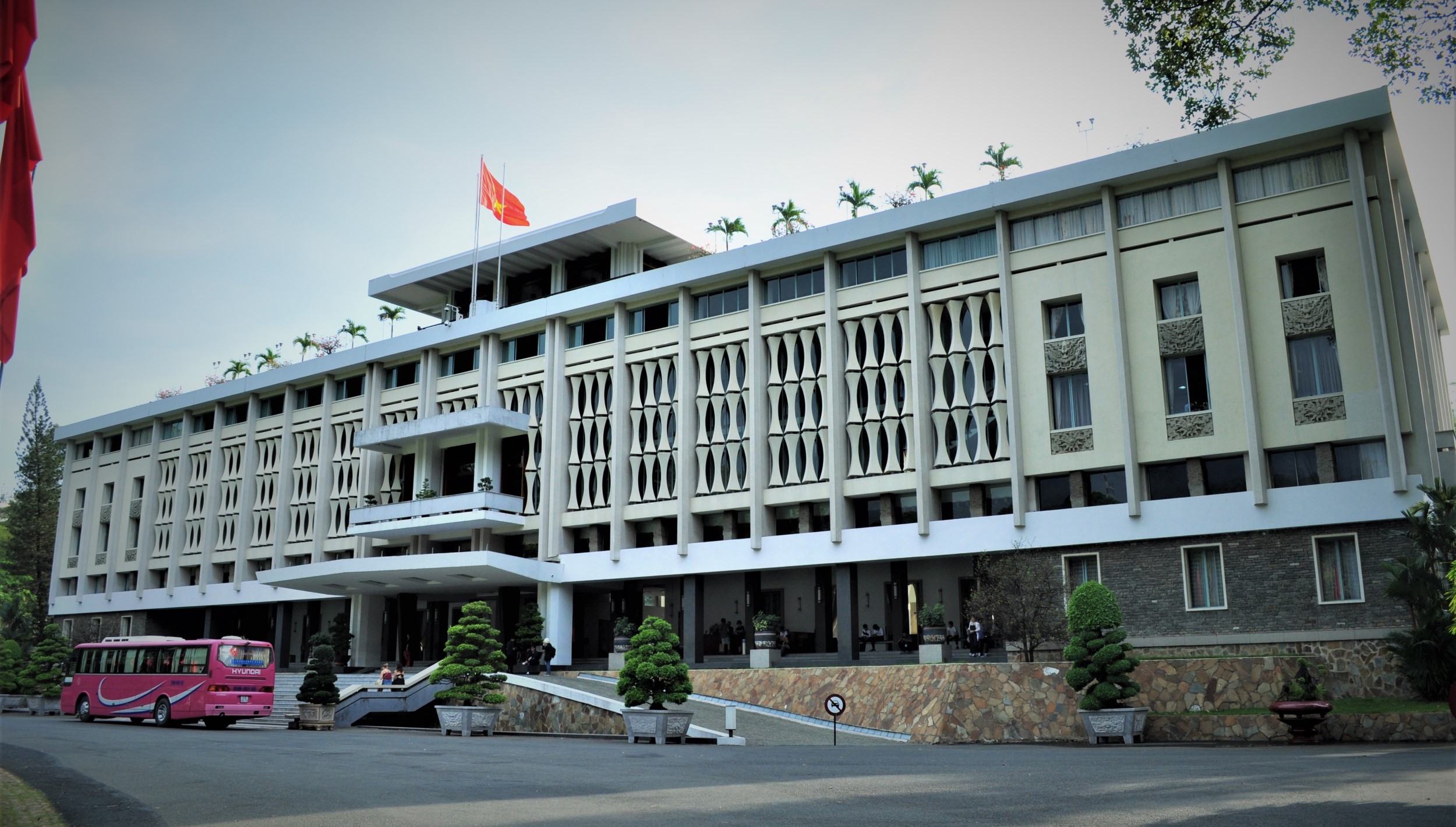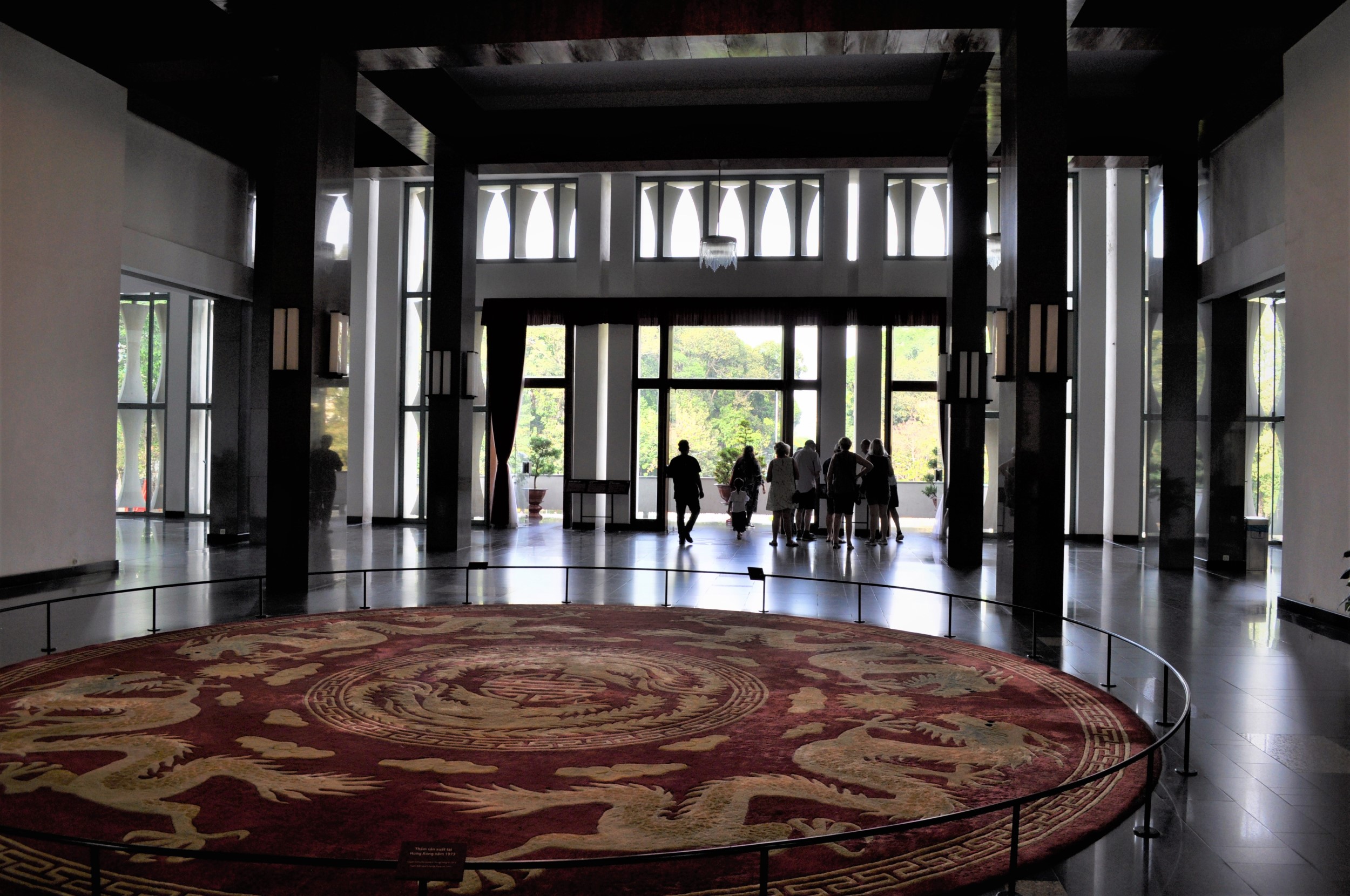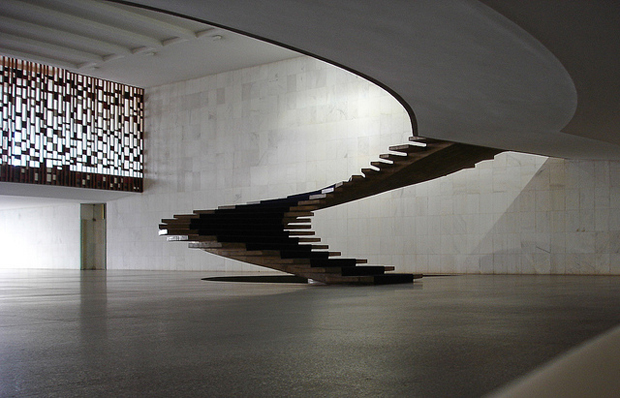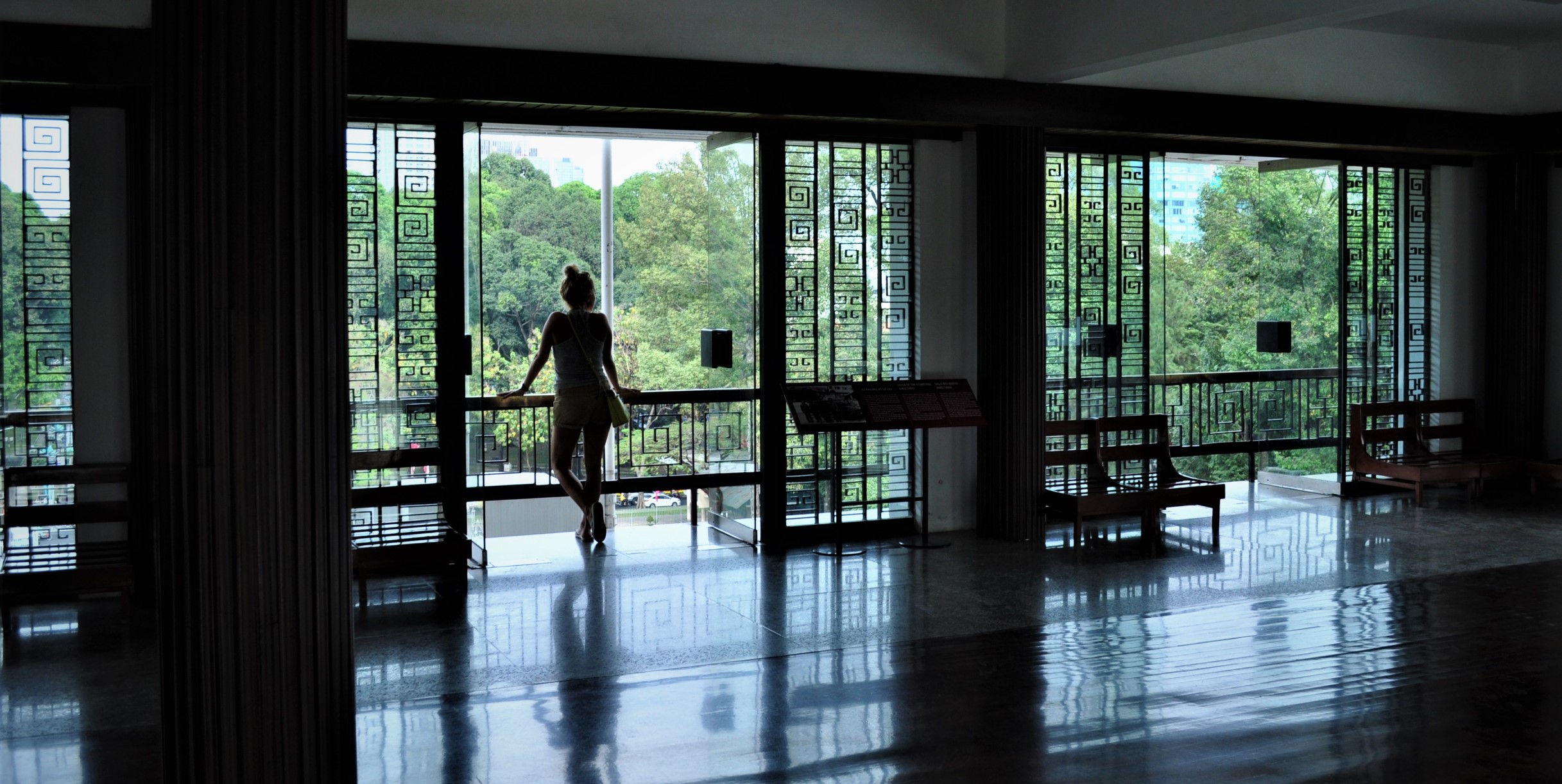Vietnam is an amazing Country! I have no doubts about it. The food, the culture, the history, the landscape, all full of interesting and very peculiar aspects. However, Ho Chi Minh City (or “Saigon”, old name which I much more prefer), is a particular case in my point of view. It is such a cosmopolitan and dynamic city, I was very impressed!

In Saigon you can find many cool places such as very interesting museums, cool art shops, contemporary skyscrapers, very good restaurants and also the beautiful “Independence Palace”, located in the District 1 zone. It was built on the site of the former Norodom Palace and was the home and workplace of the President of South Vietnam during the Vietnam War.



The palace’s construction started on July 1962, after the former Norodom Palace‘s bombing during the Vietnam War on February 1962, and was completed on October 1966. The professional responsible for its design was the Vietnamese architect Ngô Viết Thụ, who won the First Grand Prize of Rome (Grand Prix de Rome) in 1955, the highest recognition of the Beaux-Arts school in Paris.
The “Independence Palace” is a marvelous example of Modernist Architecture in Vietnam. It presents the sober atmosphere characteristic of the institutional architecture types designed around those modern times, which can be found internationally, including in Brazil. However, the very intense and colorful interiors reflect the Vietnamese vibrant and diverse culture. Actually, once the Vietnamese palace was designed after Brasilia’s, Brazilian planned capital, inauguration, in 1960, it probably had a lot of Oscar Niemeyer’s influence in its design.

Alvorada Palace, Brasilia – Oscar Niemeyer Source: https://www.phaidon.com/agenda/architecture/articles/2012/december/07/buildings-that-changed-the-world-brasilia-brazil/

Itamaraty Palace staircase, Brasilia – Oscar Niemeyer Source: https://www.phaidon.com/agenda/architecture/articles/2012/december/07/buildings-that-changed-the-world-brasilia-brazil/
The palace’s architect worked masterfully with very well integrated high ceiling spaces which allow the light to come inside and beautifully fulfil the very exotic and colorful interiors designed with Vietnamese traditional furniture and referenced elements.



Still during the Vietnam War, on 8 April 1975, a pilot of the South Vietnamese air force and an undetected communist spy, flew an F-5E aircraft to bomb the palace, but caused no significant damage. Then on 30 April 1975, a tank of the North Vietnamese army bulldozed through the main gate, effectively ending the war.
Thus, on November 1975, after the negotiation convention between the communist North Vietnam and their colleagues in South Vietnam was completed, the Provisional Revolutionary Government renamed the palace Reunification Hall. Today it is a museum, symbol of the Revolutionary Government’s success in Vietnam, but with no institutional official use anymore.



*All the images in this post belongs to the writer´s personal gallery and correspond to intellectual property, otherwise as noted.
Important Sources:
https://en.wikipedia.org/wiki/Independence_Palace


















Comments
Deborah Braga
Very interesting place.. I loved the little garden in the middle of the building :)
Nathalia Braga
to Deborah Braga
Yes, it is a very interesting place! Very worth a visit. The internal garden is also very characteristic of these Architectural modernist style. It is a very beautiful Vietnamese Architectural piece!
ปั้มไลค์
Like!! I blog frequently and I really thank you for your content. The article has truly peaked my interest.
unfairly dismissed
Great blog.Really thank you! Fantastic.